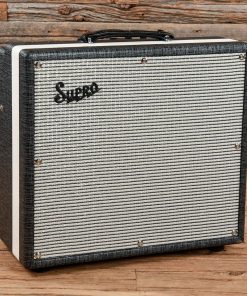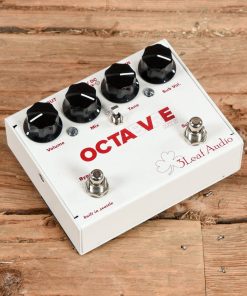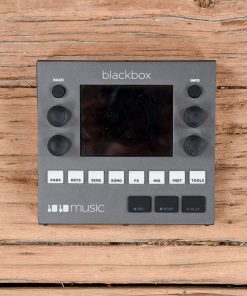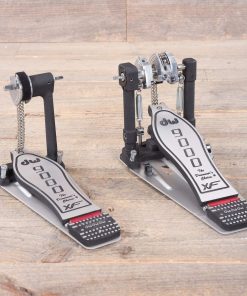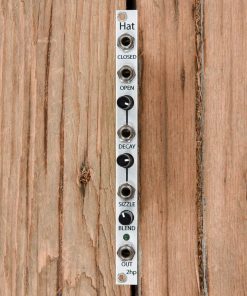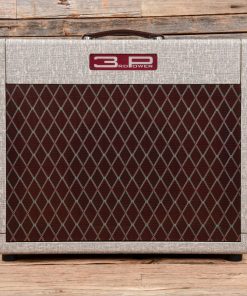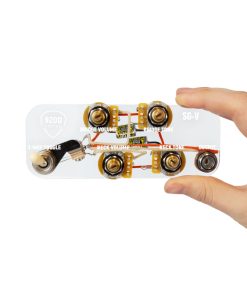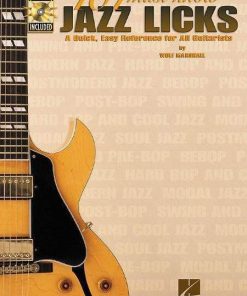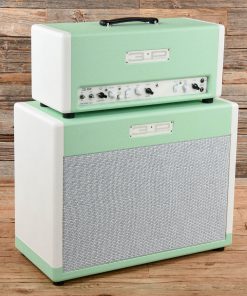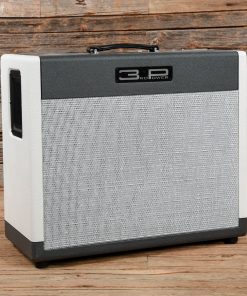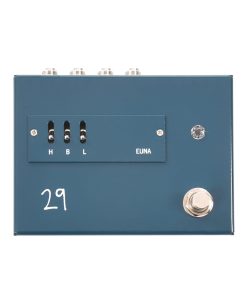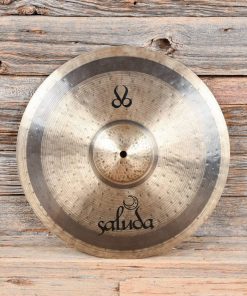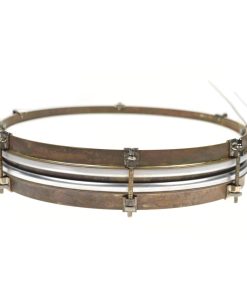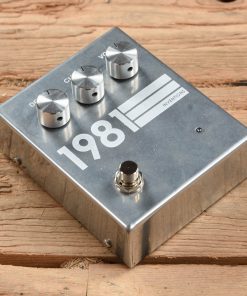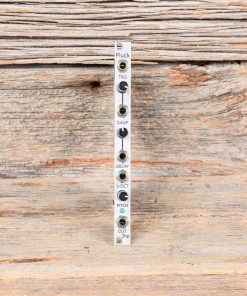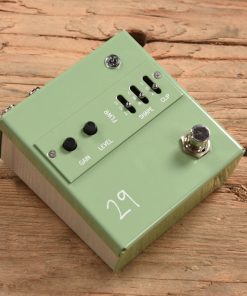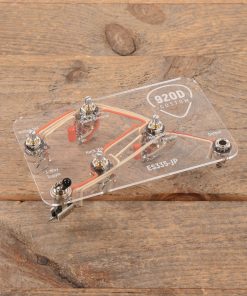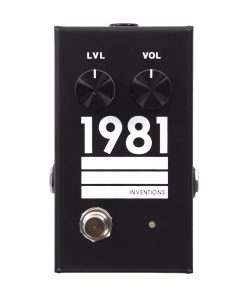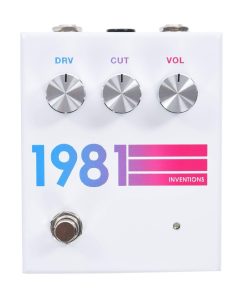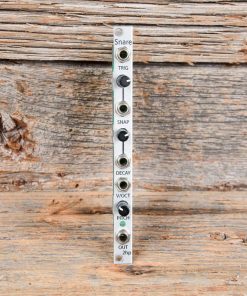Alexander Pedals Quadrant Audio Mirror Alexander Pedals
$ 199,99 $ 80,00
Alexander Pedals Quadrant Audio Mirror
From Alexander Pedals: It’s here! The Quadrant Audio Mirror, the ultimate compact delay from Alexander Pedals. What began as the History Lesson V3 slowly morphed into this NEO pedal that became too powerful and too expansive to be constricted as just a 3rd version title. The Quadrant includes the familiar tape (MAG), analog (BBD) and digital (DIGI) modes while adding a “LOFI” mode to the mix! All knobs on the Quadrant now have secondary functions that can tweak each mode to perfection. Most of these new control additions are pretty self explanatory but the “Glide” control is something special as it controls how the device reacts to tempo changes. The user can now select whether they want the pitch to react to these changes or not. Of course, the Quadrant boasts all of the standard NEO platform features like 4 internal presets, 16 via more Midi, EXP control over all parameters for “morphing” between two fully controllable settings, USB control, and a lot more.
Scroll down for specs and additional information on the pedal’s myriad of technical functions.
Brand: Alexander Pedals
Model: Quadrant Audio Mirror
Type: Delay
Outputs: 1 1/4″
Inputs: 1 1/4″, 1 1/4″ MIDI/EXP
MIDI/EXP:
- Expression Pedal: Set the expression pedal to the heel down position, then adjust the knobs to your preferred setting. Sweep the pedal to the toe position and set the knobs to a different setting. Now the Quadrant will allow you to seamlessly morph between the two settings!
- Foot Switch: The Neo Footswitch (sold separately) allows for preset select, tap tempo, or ramp morph control – all with LED indication. The Quadrant will also work with a standard tap tempo footswitch.
- MIDI: The Neo Series pedals can connect to a compatible MIDI controller to control all of the pedal functions plus access 12 extra presets, for a total of 16. The USB port may also be used as a MIDI interface to your computer or mobile device.
True Bypass: Buffered Bypass with Soft-touch Footswitch
Controls: Controls in parentheses () are accessed by holding down the Select button and turning the indicated knob.
- Rate: Controls the delay time from 0-915ms. If Glide is disabled, the time will adjust seamlessly. If Glide is enabled, the time will pitch-shift and get all “rubberbandy” (technical term.)
- (Tone): Controls the tone of the delay engine. Controls the grunge and grit of the Lo-Fi mode.
- Feedback: Controls the repeat level of the delay. The BBD mode will go into infinite / runaway feedback.
- (Glide): Controls the delay time change method. If Glide is set to less than 12 o’clock, the delay time will adjust seamlessly when tapped or adjusted with the Time knob. If Glide is set to greater than 12 o’clock, the delay time will pitch shift when adjusted.
- Mix: Controls the blend between the dry and delay signal. Equal mix is at 12 o’clock.
- (Level): Controls the overall output level of the pedal, from -20dB to +10dB. Unity gain is near 1 o’clock.
- Mod: Adjusts the depth of the delay modulation.
- (Rate): Adjusts the rate of the delay modulation.
Modes:
- MAG – Magnetic tape echo, warm and rich. The MAG mode captures the frequency response of the tape heads and preamp of a vintage tape delay. The Mod knob controls the “wow” or “flutter” of the tape. Each delay repeat loses both treble and bass, for a warm and compressed sound. The Tone knob controls the age of the tape, making the echo brighter or darker.
- BBD – Analog delay, murky and wet. The BBD mode is based on a classic solid-state analog echo. This mode is capable of infinite repeats for the classic analog delay “spaceship” tone. The Mod knob adds analog chorus or vibrato. The Tone knob controls the analog delay filter.
- DIG – Digital delay, bright and present. The DIG mode captures the sheen and clarity of the early digital delays. Each repeat sounds just like what you put in, with the classic digital “clang” you will either love or hate. The Mod knob adds wide-ranging pitch modulation, be careful! The Tone control sweeps the delay between low-pass and highpass filtering for a wide range of delay tones.
- LOFI – How can we put this? This mode sounds terrible. Don’t use it. It’s all dirty and grungy and sounds like you’re playing through a payphone. The Tone knob might make things a little bit cleaner, but it’s never gonna be hi-fi.
Prompt shipping and expert packing
We offer a broad range of shipping options thanks to our long-standing partnerships with UPS, FedEx and DHL. Our warehouse staff will package every item to our exacting specifications. Your goods are thoroughly checked and properly secured before shipping. We deliver to thousands of customers every day in a variety of countries. This shows our commitment to becoming the largest online retailer on the planet. The warehouses are located located in Europe in the same way as they are in the USA.
Note: Orders containing more than one item will be assigned a distinct processing time for each item.
Prior to shipment, we check the item thoroughly before sending the items. The majority of orders are shipped within 48 hours. The delivery time should be between 3-7 working days.
Returns
The stock is dynamic and we cannot control it completely because of the fact that many parties are involved, which includes our warehouse and factory. The actual stock levels can fluctuate at any moment. It is possible that your order may be out of stock after the order is placed.
Our policy runs for 30 days. If 30 days have passed in the past since you purchased however, we're unable to give an exchange or refund.
To be returned, it must be unopened and in the same condition as when you received it. The item should be in its original packaging.
Related products
Drums and Percussion
20″ Craig Lauritsen Custom Rustico Crash Ride Cymbal USED Chicago Music Exchange
Parts / Amp Parts
920D Custom LP50-SPLIT Les Paul Wiring Harness Upgrade w/Coil Split Mod 920D Custom
Amps / Guitar Cabinets
1695T Black Magick 25-Watt 1×12″ Guitar Combo Chicago Music Exchange
Effects and Pedals / Octave and Pitch
Effects and Pedals / Controllers, Volume and Expression
Drums and Percussion / Parts and Accessories / Drum Parts
Keyboards and Synths / Synths / Eurorack
Accessories / Merchandise
Accessories / Books and DVDs
Amps / Guitar Combos
3rd Power Amplification British Dream MKII 1×12 Combo 3rd Power Amplification
Amps / Guitar Combos
Parts / Amp Parts
Accessories / Books and DVDs
Drums and Percussion / Acoustic Drums / Snare
A&F Drum Co. 1.75×12 Pancake Raw Brass Snare Drum A&F Drum Co.
Accessories / Books and DVDs
Amps / Guitar Cabinets
3rd Power Amplification Dual Citizen 2-Channel 40-Watt Head w/ 2×12 Cab 3rd Power Amplification
Amps / Guitar Combos
3rd Power Amplification British Dream Combo 3rd Power Amplification
Effects and Pedals / Overdrive and Boost
Drums and Percussion / Cymbals / Crash
Drums and Percussion / Acoustic Drums / Snare
A&F Drum Co. 1.75×14 Pancake Raw Brass Snare Drum A&F Drum Co.
Effects and Pedals / Overdrive and Boost
Keyboards and Synths / Synths / Eurorack
Effects and Pedals / Overdrive and Boost
Amps / Guitar Heads
Effects and Pedals / Overdrive and Boost
1981 Inventions DRV Overdrive Black Hyperfade 1981 Inventions
Effects and Pedals / Wahs and Filters
Keyboards and Synths / Synths / Eurorack
Parts / Amp Parts
920D Custom ES335-JP Wiring Harness for Gibson/Epiphone ES-335 w/Four Push/Pulls 920D Custom
Effects and Pedals / Overdrive and Boost
Effects and Pedals / Overdrive and Boost
1981 Inventions DRV Overdrive White Hyperfade 1981 Inventions
Keyboards and Synths / Synths / Eurorack






